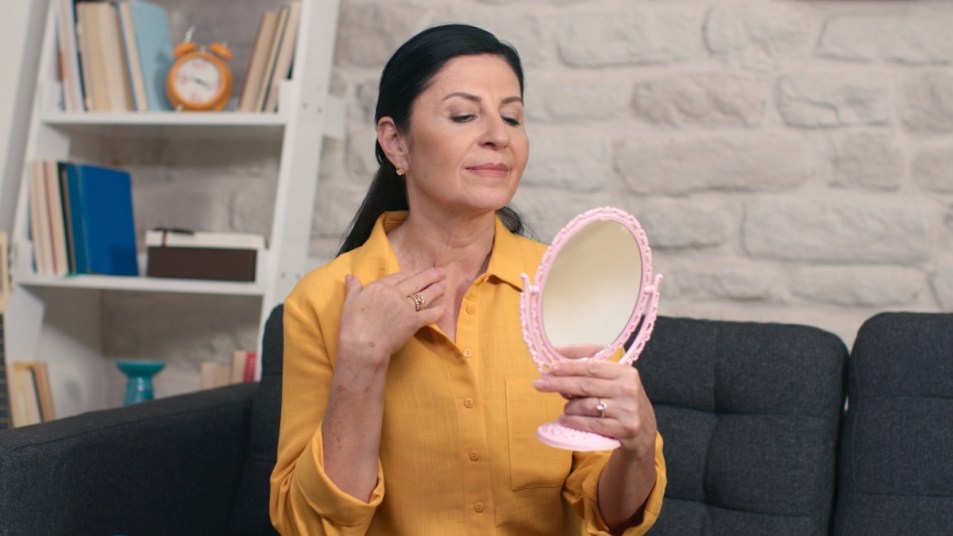Life-Saving Health Checks You Can Do in 60 Seconds Or Less
They're convenient and revealing.

There are few things more important than our health. If we don’t feel well, we aren’t as prepared to accomplish our goals. That’s why it’s so important to visit your doctor for regular physicals and wellness checks. But what about the times in between appointments? There are some fast, easy things you can do at home to get potentially vital insights into your health. These quick health checks aren’t meant to cause panic, but are meant to equip you with questions for your doctor, so you can feel your very best. Keep reading to see how something as easy as looking at a light can help you be healthier — and other simple tricks for overall wellness.
Check your thyroid by swallowing.
Look in a mirror as you swallow. If a lump appears low on your neck, close to your collarbone, it’s possible you may have an undiagnosed thyroid issue. An example would be hypothyroidism (an underactive thyroid), which can cause fatigue, weight gain, and depression. If you suspect you have this issue, visit your doctor. In addition to any meds she may prescribe, try sipping 2 ounces of food-grade aloe vera juice on an empty stomach each morning; it may boost thyroid function, according to a study published the the Journal of Clinical and Translational Endocrinology.
Check your vision with a light.
Take a quick look at a light bulb across the room that’s turned on. If you see a halo around it, it may be a sign of vision-clouding cataracts. If you’re experiencing this, along with symptoms like poor night vision and sensitivity to light, seek professional help. In addition to any Rx your MD advises, eat two oranges weekly. A study published in the Journal of American Opthamology suggests that the fruit’s vitamin C may help prevent the risk of cataracts worsening.
Check for diabetes by smelling your breath.
Cup your hand over your mouth, exhale, then sniff. Fruity or acetone-smelling breath can signal high levels of liver acids that are present in diabetes sufferers. This phenomenon is called diabetic ketoacidosis, which may also cause symptoms like fatigue, headaches, and weakness. Talk to your doctor for a treatment plan, and go to the emergency room immediately if you’ve been vomiting for two hours, or are experiencing confusion or shortness of breath.
Follow your doctor’s advice, and consider adding 10 minutes of yoga to your daily routine. A study published in the Journal of Integrative and Complementary Medicine suggests that routine mind and body practices may help keep blood sugar under control.
Check for dehydration by pinching your hand.
Pinch the back of your hand. If the skin doesn’t bounce back fast, you may be dehydrated. You could also be experiencing dehydration symptoms like headache, fatigue, dry mouth, and dizziness. Sipping about two cups of water may help nix unpleasant side effects like head pain in as little as 30 minutes, suggests research in Headache: The Journal of Head and Face Pain.
Check your heart health by measuring your waist.
Measure your waist and hips. If your waist is bigger than your hips, you may have an increased risk of suffering from a heart attack, says a review published in Medicine. Experts from The American Heart Association explain that the fat around the waist may be more closely associated with cardiovascular health than fat around the hips because it’s visceral, meaning it’s more insulin resistant. Talk to your doctor about a diet and exercise plan that will help you reach your ideal weight. While you follow their advice, consider a vitamin D supplement. According to research published in the Journal of the American Nutrition Association, pairing vitamin D with a healthy diet may help you lose more weight.
This content is not a substitute for professional medical advice or diagnosis. Always consult your physician before pursuing any treatment plan.
A version of this article originally appeared in our print magazine, Woman’s World.












